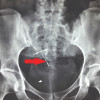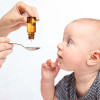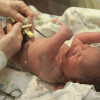
 IJCP Editorial Team
IJCP Editorial Team
Human Milk Oligosaccharide Concentrations Associated with Maternal Overweight and Obesity and Predict Infant Growth
A recent study published in Nutrients quantified the composition of human milk oligosaccharides (HMOs) of women with normal BMI (18.5-24.9 kg/m2), overweight or obesity, and determine the influence of HMO intake on infant growth.
Here, human milk (HM) samples were collected at 2 months postpartum, which were examined for HMO concentrations. The relationships between maternal BMI and HMO composition, as well as HMO intake and infant growth were analyzed over the first 6 months after birth.
The findings revealed associations between maternal obesity with lower concentrations of several fucosylated and sialylated HMOs. Infants born to obese mothers demonstrated lower intakes of these HMOs.
Positive associations were found between maternal BMI and lacto-N-neotetraose, 3-fucosyllactose, 3-sialyllactose, and 6-sialyllactose. Whereas, there were negative associations with disialyllacto-N-tetraose, disialyllacto-N-hexaose, fucodisialyllacto-N-hexaose, in addition to the total acidic HMOs concentrations at 2 months.
Additionally, 3-fucosyllactose, 3-sialyllactose, 6-sialyllactose, disialyllacto-N-tetraose, disialyllacto-N-hexaose, and total acidic HMOs intakes were positively associated with infant growth over the first 6 months of life.
Hence, it was inferred that maternal obesity correlated to the changes in HMO concentrations – linked to infant adiposity.
Source: Nutrients. 2021 Feb; 13(2): 446. Published online 2021 Jan 29. doi: 10.3390/nu13020446

IJCP Editorial Team
Comprising seasoned professionals and experts from the medical field, the IJCP editorial team is dedicated to delivering timely and accurate content and thriving to provide attention-grabbing information for the readers. What sets them apart are their diverse expertise, spanning academia, research, and clinical practice, and their dedication to upholding the highest standards of quality and integrity. With a wealth of experience and a commitment to excellence, the IJCP editorial team strives to provide valuable perspectives, the latest trends, and in-depth analyses across various medical domains, all in a way that keeps you interested and engaged.













Please login to comment on this article